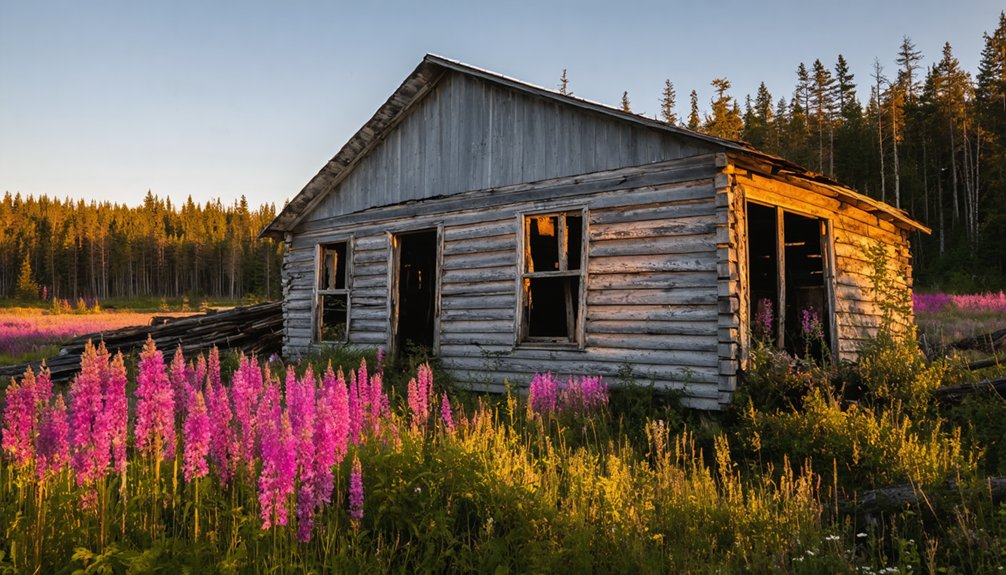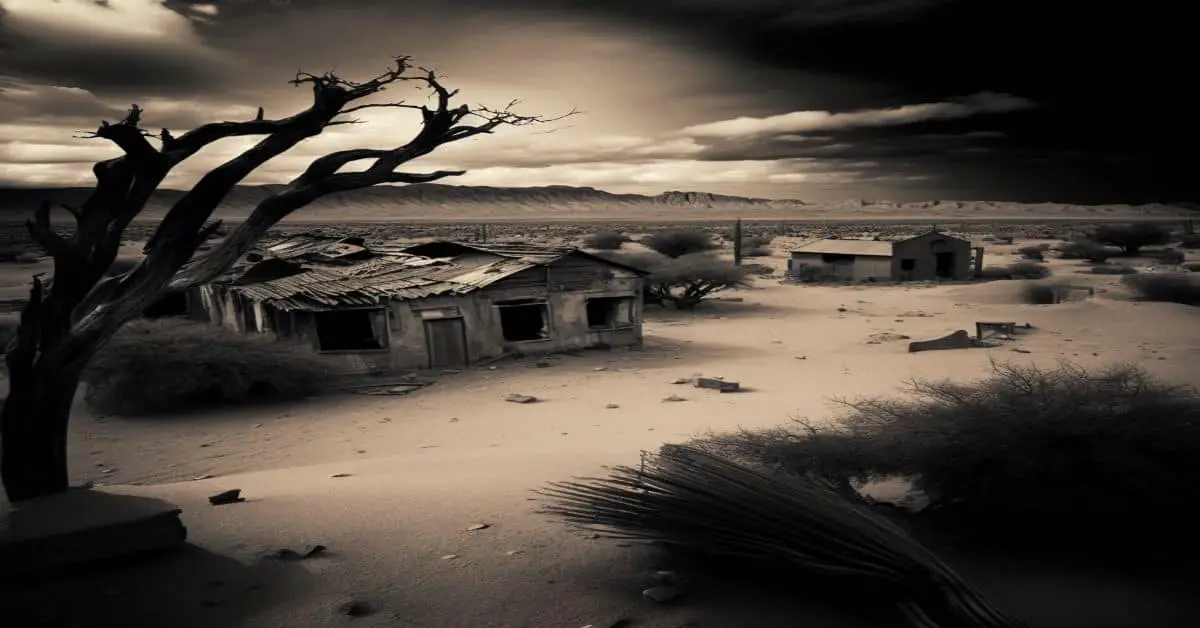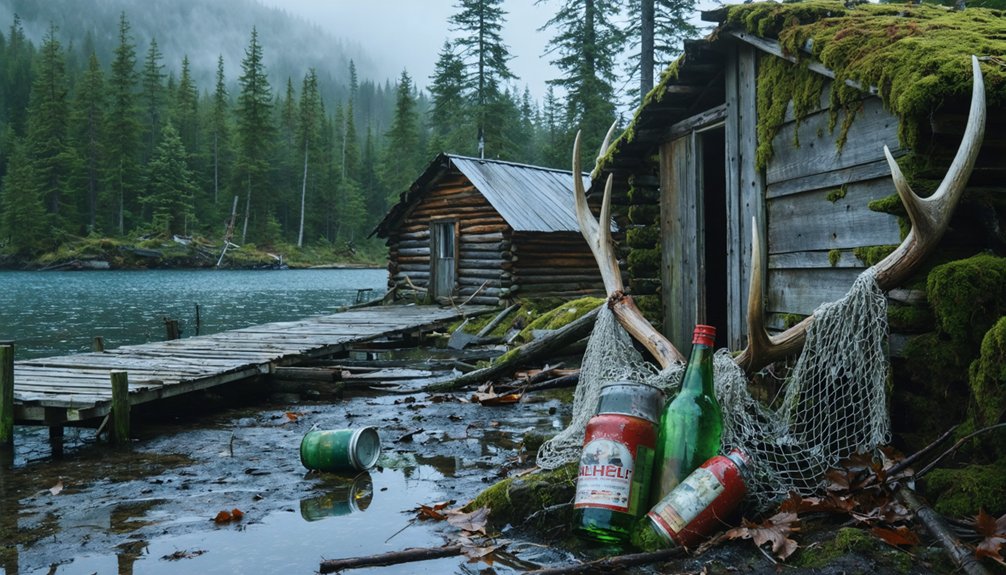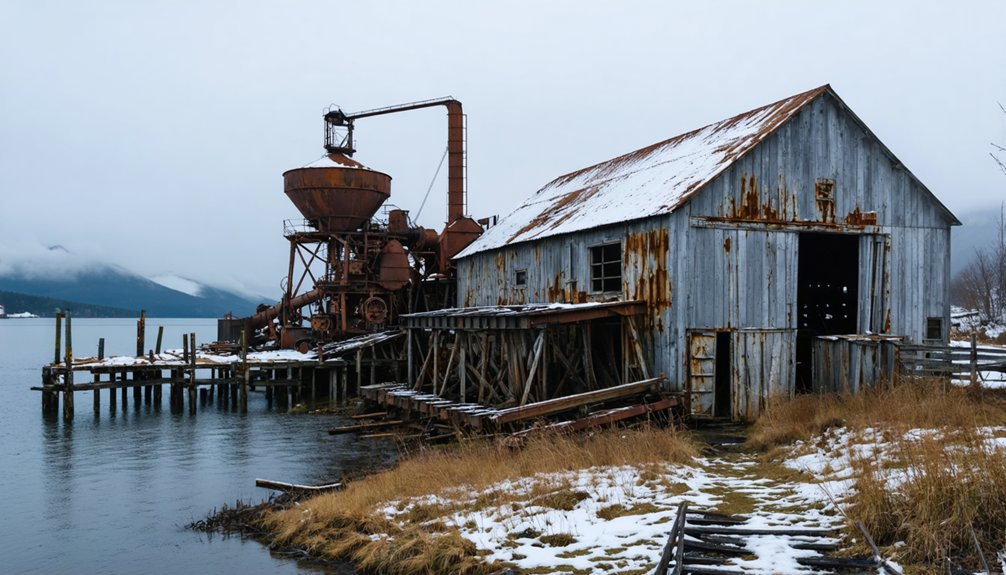You’ll discover Chena as one of Alaska’s most intriguing ghost towns, established during the 1902 gold rush along the Tanana River, five miles from Fairbanks. The boomtown quickly grew to 400 residents with hotels, shops, and essential dock facilities serving Interior Alaska’s mining operations. By 1920, gold depletion and flooding reduced the population to just 18 people. Today, archaeological excavations continue to unearth fascinating remnants of this forgotten frontier settlement.
Key Takeaways
- Chena was a gold rush boomtown near Fairbanks, Alaska that flourished from 1907-1910 before declining into abandonment by 1920.
- The town served as a vital supply hub and port for Interior Alaska’s gold mining operations, with a peak population of 400.
- Natural disasters, gold depletion, and World War I led to Chena’s downfall, with annual flooding eventually washing away buildings and infrastructure.
- Archaeological excavations since 2013 have uncovered building foundations, personal artifacts, and trade goods from the original gold rush settlement.
- The former townsite is now overgrown with vegetation in the Chena Ridge neighborhood, with few visible remnants of its gold rush past.
The Rise of a Gold Rush Boomtown
When gold fever swept through Alaska in the early 1900s, Chena emerged as a promising boomtown on the north bank of the Tanana River.
Just five miles downstream from what would become Fairbanks, this strategic location made it an ideal supply hub for gold prospecting operations throughout Interior Alaska.
Situated near present-day Fairbanks, Chena’s riverside location perfectly positioned it as a vital supply center for Alaska’s interior goldfields.
As thousands of fortune seekers flooded the region, Chena quickly transformed from a modest trade camp into a bustling port town.
You’d have found everything a miner needed – from basic provisions to mining technology and equipment.
The town’s popularity grew as it served stampeders traveling between the Yukon and Tanana Rivers, capitalizing on the broader gold rushes that included Nome and the Klondike.
This prime position in Alaska’s gold economy helped Chena thrive as an early cornerstone of the region’s mining infrastructure, though land claim thefts were common as competition with Fairbanks intensified.
The Tanana Valley Railroad connected the town to vital mining operations, making Chena an essential transportation hub for the region.
Life in Early 20th Century Chena
Life in early 20th century Chena centered around the bustling railroad yards, dock facilities, and mining operations where workers spent their days loading freight, repairing equipment, and supporting the gold rush economy.
You’d find residents living in a mix of hotels and private homes, with access to essential services like the hospital, police department, and public school. The town’s prosperity was short-lived as Judge Wickersham’s influence drew businesses and residents to nearby Fairbanks.
After work hours, you could join fellow townspeople at the dance hall, attend services at one of several churches, or catch up on local news at establishments that served Chena’s peak population of 400 residents. The town’s location along the Chena River provided a vital transportation route for supplies and people during its heyday.
Daily Work and Commerce
During its peak years between 1907-1910, Chena bustled with commercial activity anchored by its strategic position as the southern terminus of the Tanana Valley Railroad.
You’d find a diverse labor dynamic, with workers manning the docks to handle riverboat freight, operating repair shops, and maintaining the railway connecting to Fairbanks. The narrow gauge railway transported both passengers and cargo along the five-mile spur track between the two competing towns.
The town’s commercial infrastructure supported daily life with two hotels, general stores, a bakery, and restaurants serving miners and railroad employees.
You could send telegrams through the WAMCATS station, get your laundry done, or pick up supplies at the warehouses.
Essential services included a police department, fire station, and public school.
The sawmill and powerplant kept industry humming, while The Tanana Miner newspaper kept everyone informed about local happenings.
Living Conditions and Housing
Stepping into a typical Chena residence in the early 1900s, you’d find yourself in a modest log cabin built from locally harvested timber, where survival took precedence over comfort.
Archaeological evidence from the UAF excavation findings revealed the simple but sturdy construction techniques used by early settlers.
You’d notice the basic stone or wood foundations beneath your feet, while rudimentary insulation of moss and animal hides would attempt to keep the bitter cold at bay.
Living standards centered on essential needs – a wood stove served as your lifeline during brutal winters, while oil lamps or candles provided your only illumination until the town’s power plant arrived.
You’d share the challenges of living without indoor plumbing, relying instead on outdoor privies and hauling water from the nearby rivers.
Despite these hardships, housing materials proved resilient, with many structures built to withstand the harsh Alaskan elements.
Social Activities and Recreation
While facing the harsh realities of frontier life, Chena’s residents found vibrant ways to build community through social activities and entertainment.
You’d find townspeople gathering at the local dance hall for performances by traveling musicians or congregating at general stores to swap stories and news. Community gatherings took place regularly at the city hall, churches, and during festive riverboat parties.
If you craved outdoor activities, you could join your neighbors for hunting and fishing along the Tanana and Chena rivers.
The town’s social scene thrived through its newspaper, the Tanana Miner, which kept you connected to local happenings.
Whether you attended school events, visited the hospital, or picked up fresh goods at the bakery, Chena’s social infrastructure fostered a tight-knit frontier community. Much like other gold rush communities, residents maintained social connections through various entertainment venues and gatherings.
The Battle Between Chena and Fairbanks
As the gold rush brought thousands of miners and settlers to Alaska’s interior in the early 1900s, Chena and Fairbanks emerged as fierce rivals vying for commercial dominance.
The Chena rivalry intensified as both towns competed to become the region’s primary economic hub, mirroring similar conflicts between Forty Mile and Dawson City, or Dyea and Skagway.
You’ll find that Chena initially held its own with a population of 400 by 1907, boasting hotels, stores, and its own newspaper, the Tanana Miner.
However, the Fairbanks advantage became clear when it secured better transportation connections.
The discovery of Chena Hot Springs by gold-mining brothers in 1905 brought temporary hope to the area’s development.
Decline and Abandonment
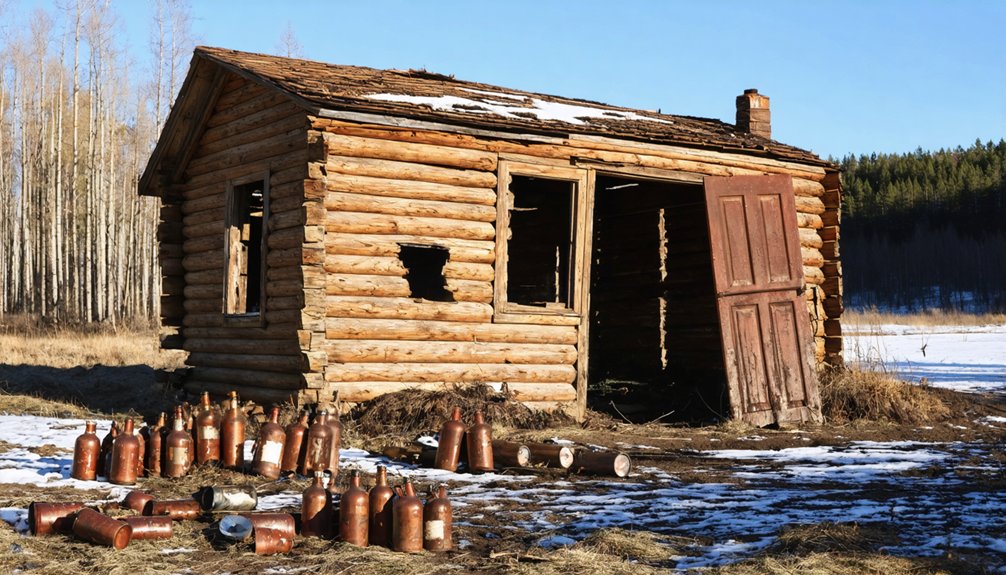
Once the gold in the Tanana Valley began to dwindle around 1915, Chena’s decline accelerated rapidly.
Multiple economic factors converged to seal the town’s fate: gold depletion led to mine closures, World War I drew away workers, and the Tanana Valley Railroad went bankrupt by 1917.
You’ll find that population shifts were dramatic – from a bustling frontier town to just 18 residents by 1920.
The town’s physical remnants disappeared as quickly as its people.
Like ghosts fading into morning mist, both Chena’s buildings and inhabitants vanished swiftly into history’s shadows.
Annual flooding from the Tanana River washed away docks and streets, while buildings were dismantled and repurposed in nearby communities like Fairbanks and Nenana.
For nearly a century, Chena lay forgotten until 2013, when old survey notes finally helped pinpoint its original location, leading to archaeological discoveries that revealed traces of frontier life.
Today, the area surrounding the former ghost town has transformed into Chena Ridge neighborhood, home to approximately 6,000 residents.
Archaeological Discoveries and Excavation
Since archaeological work began in 2013, excavations at Chena’s townsite have revealed the skeletal remains of this forgotten gold rush community.
Through careful archaeological methods and artifact analysis, you’ll find a fascinating glimpse into life during Alaska’s early frontier days. The University of Alaska Fairbanks conducts six-week field schools where researchers meticulously map and document the site’s hidden treasures. Students earn six academic credits while participating in these comprehensive excavations.
- Foundations of log cabins and commercial buildings emerge from beneath the willow and alder overgrowth
- Blacksmith shops, butcheries, and lodging facilities paint a picture of a bustling supply hub
- Personal belongings and trade goods tell stories of the diverse, transient population
- Evidence of animal shelters shows how residents adapted to harsh Alaskan winters
Natural Forces and Environmental Impact
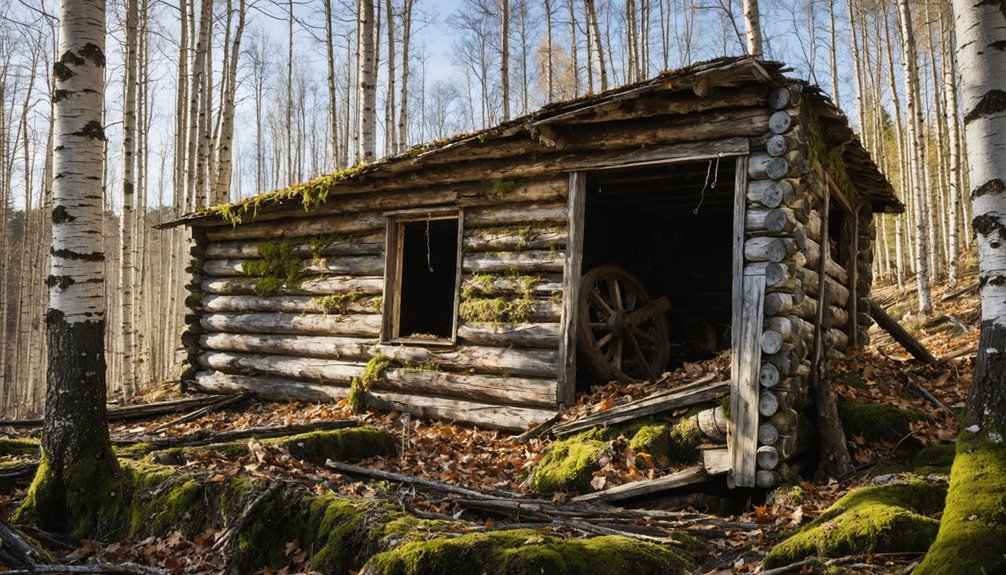
While the abandoned structures of Chena have slowly disappeared over time, the Chena River’s powerful forces continue to reshape the landscape through flooding, erosion, and natural succession.
The river dynamics have transformed the original townsite, as annual runoff of over 137,000 gallons and petroleum contamination from nearby military facilities have degraded water quality. You’ll find evidence of environmental degradation in visible oil sheens and elevated sediment levels, leading to Clean Water Act impairment listings.
Nature’s reclamation of the area is evident in the willow and alder thickets that now dominate where buildings once stood.
Though flooding posed significant challenges for early settlers, today’s conservation efforts focus on riverbank stabilization using native vegetation, while levee systems help protect against the river’s destructive potential.
Modern-Day Site and Historical Preservation
The overgrown landscape of modern-day Chena reveals little of its gold rush glory, as thick willow and alder thickets have reclaimed most of the original townsite.
Nature slowly erases Chena’s golden past beneath a wild tangle of willow and alder.
You’ll find this historic area near the north bank of the Tanana River, close to Fairbanks’ Chena Ridge suburb. While preservation challenges include natural overgrowth and limited funding, the site’s archaeological significance continues to draw researchers from the University of Alaska Fairbanks.
Key aspects of modern Chena include:
- Building foundations visible only through archaeological excavation
- UAF field schools conducting extensive research since early 2000s
- Local government efforts to protect artifacts from looting
- Focus on archaeological integrity rather than reconstruction
The site’s primary value now lies in academic research and historical documentation rather than tourism, with excavations revealing fascinating insights into Alaska’s gold rush era.
Frequently Asked Questions
What Happened to the Original Residents After Chena Was Abandoned?
You’ll find most Chena residents didn’t vanish into thin air after Chena’s abandonment – they simply moved to nearby Fairbanks and Nenana, where better opportunities and services awaited them.
Were There Any Famous People or Notable Events Associated With Chena?
While there weren’t any famous residents, you’ll find the town’s most notable event was its fierce rivalry with Fairbanks, where Judge Wickersham’s political influence ultimately led to Chena’s downfall.
Did Any Original Buildings From Chena Survive and Get Relocated?
Like ghosts of the past, you’ll find only a handful of Chena’s buildings survived. Some were moved to Fairbanks for building preservation, while others were dismantled and transported to Nenana’s railroad development.
What Indigenous Communities Lived in the Area Before Chena’s Establishment?
The Lower Tanana Athabascan people, with their rich indigenous heritage, called this region home. You’ll find their cultural traditions reflected in seasonal hunting patterns, fishing practices, and deep connections to the land.
How Did the Winter Climate Affect Daily Life in Chena?
With temperatures dropping below -20°F, you’d spend most of your time on winter survival – gathering wood, melting snow for water, and maintaining strict daily routines to prevent freezing in your home.
References
- https://www.miningnewsnorth.com/story/2023/02/03/mining-history/rediscovering-the-gold-rush-town-of-chena/7802.html
- https://en.wikipedia.org/wiki/Chena
- https://amerisurv.com/2013/01/26/where-is-chena-the-search-for-a-lost-century-old-gold-rush-town/
- https://www.ktoo.org/2021/07/26/uaf-team-excavates-chena-the-abandoned-gold-rush-town-that-lost-out-to-fairbanks/
- https://www.uaf.edu/podcast/my-alaska-summer/episode-05-transcript.php
- https://alaskapublic.org/news/2021-07-25/uaf-team-dig-up-chena-the-abandoned-gold-rush-boom-town-that-preceded-fairbanks
- https://en.wikipedia.org/wiki/Chena_Ridge
- https://en.wikipedia.org/wiki/History_of_Fairbanks
- http://alaskaweb.org/mining/timeline.html
- https://www.nps.gov/articles/alaska-goldrush-national-historic-landmarks.htm
